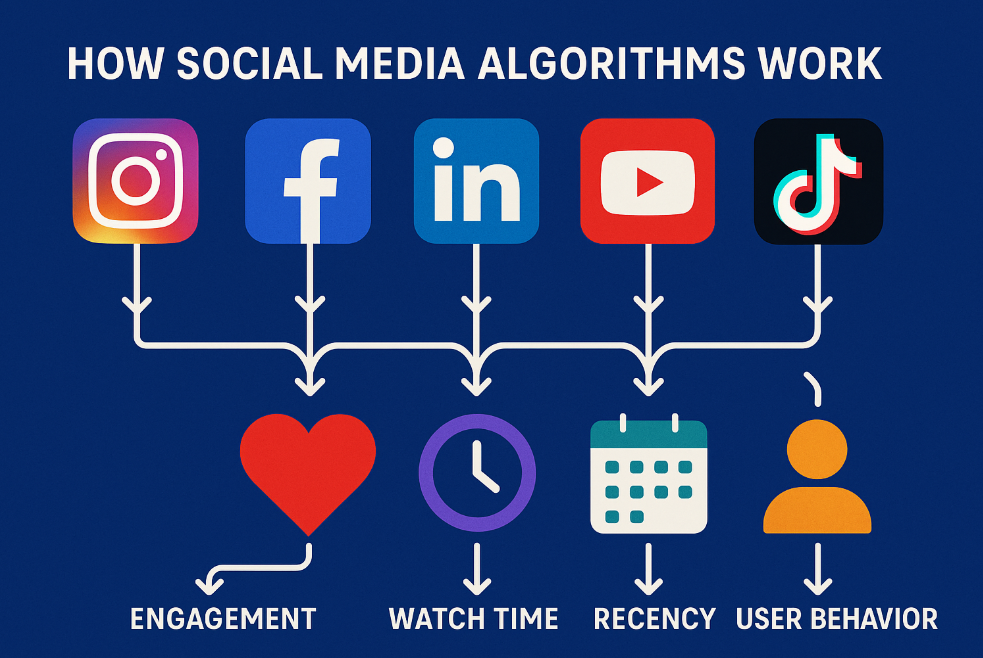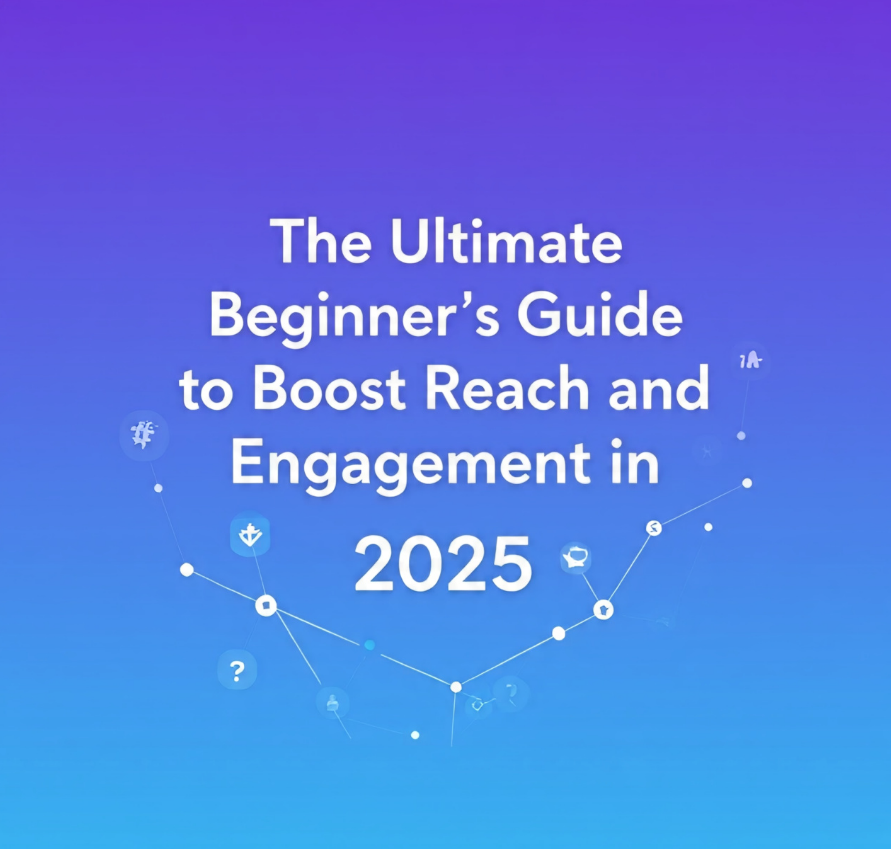Table of Contents
Discover how the social media algorithm works and how you can use it to boost reach, visibility, and engagement. This beginner’s guide helps you grow organically with smart strategies.

Social media algorithms are the reason some posts go viral while others barely get noticed. They decide what shows up in your feed.
Understanding how they work can help your content reach more people.
If you’re a creator, business owner, or marketer, understanding how social media algorithms work is the first step to growing your reach naturally.
What Are Social Media Algorithms?
At its core, a social media algorithm is a set of automated rules or formulas used by platforms like Instagram, Facebook, LinkedIn, YouTube, and TikTok.
These algorithms decide:
-
What content appears in a user’s feed
-
The order in which posts are shown
-
Which content receives the most visibility
It keeps users engaged for longer by showing them content they’re most likely to interact with.
These platforms measure relevance using factors like:
-
Engagement rate (likes, shares, comments)
-
Timeliness (how recently it was posted)
-
Content type (video, text, image)
-
User behavior (what a person typically watches, reads, or likes)
Why Understanding Social Media Algorithms Matters
If you understand how they work, you can post the right kind of content at the right time to reach more people, get more likes, shares, and followers — without paying for ads.
Here’s why they matter:
-
More visibility for high-performing content
-
Better engagement with well-timed, strategic posts
-
Increased reach by matching algorithmic signals
Your content could be high-quality and valuable — but without aligning it with the algorithm, it may never be seen.
How Social Media Algorithms Work on Each Platform
Let’s break down how the social media algorithms function on different platforms. While each has its unique formula, they generally rely on similar signals.
Instagram Algorithm
Instagram ranks posts using:
-
Engagement rate (likes, comments, saves, shares)
-
Recency (newer posts are favored)
-
Relationships (content from users you interact with is prioritized)
Use Reels and Carousel posts — they often drive more interaction and signal relevance to the algorithm.
Facebook Algorithm
Facebook favors content that leads to meaningful interactions, such as:
-
Comment threads
-
Shares from friends or family
-
Native videos and live streams
Group posts and friend interactions are pushed more than brand pages. Use storytelling, emotional appeal, and conversation starters.
YouTube Algorithm
YouTube’s recommendation system revolves around:
-
Watch time
-
Click-through rate (CTR)
-
Viewer retention
-
Relevance of title/description/keywords
Use keyword-rich titles and create binge-worthy playlists to keep users engaged.
LinkedIn Algorithm
LinkedIn favors professional content and considers:
-
Early engagement (especially comments)
-
Native posts (text, documents, polls, carousels)
-
Connection strength
Tagging relevant people and using industry hashtags helps boost visibility.
TikTok Algorithm
TikTok’s “For You Page” is purely algorithm-driven and focuses on:
-
Video completion rate
-
Likes, shares, comments
-
Interests based on user behavior
-
Trending sounds or effects
To grow on TikTok, create snackable, high-retention videos and use viral soundtracks.
How to Work With Social Media Algorithms (Beginner-Friendly Tips)
Here’s how to use the social media algorithms to your advantage:
Post Consistently
Regular content tells the algorithm that you’re a reliable creator. Whether it’s 3x a week or daily, consistency builds momentum.
Encourage Engagement
Ask questions, use polls, add call-to-actions (CTAs), and reply to every comment. Algorithms love interaction.
Use Keywords and Hashtags Wisely
Use niche-specific hashtags and keywords to help the algorithm categorize your content.
Create Value-Driven Content
Tutorials, how-to guides, industry insights, and trending tips often outperform generic posts. The algorithm detects if users spend more time on your post.
Leverage Each Platform’s Features
Use Reels, Stories, Carousels, YouTube Shorts, or TikTok Duets. Native features are promoted more heavily by the algorithm.
What Not to Do: Algorithm Red Flags
Avoid these common mistakes that can harm your ranking with social media algorithms:
-
Buying fake followers or engagement
-
Ignoring performance analytics
-
Inconsistent posting (ghosting for weeks)
-
Using banned or irrelevant hashtags
-
Copy-pasting identical content across all platforms
Focus on authenticity, consistency, and connection to stay in the algorithm’s good books.
The Role of Analytics in Algorithm Success
Track your performance to understand how well you’re aligning with social media algorithms. Most platforms offer insights such as:
-
Best posting times
-
Audience demographics
-
Top-performing formats
-
Engagement heatmaps
Use this data to adjust your strategy and optimize future content.
Algorithm Changes: Staying Ahead of the Curve
Social media algorithms evolve constantly. To stay ahead:
-
Follow trusted digital marketing blogs like Neil Patel or social media examiner.
-
Test new formats regularly
-
Be adaptable — what worked 6 months ago might not work today
External Tools That Help Beat the Algorithm
Use these tools to enhance your strategy:
-
Canva – Create engaging visuals
-
Loomly – Real-time collaboration and analytics
-
BuzzSumo – Discover trending content
-
Metricool – Analyze cross-platform performance
All of these platforms support better alignment with social media algorithms.
Final Take: Master the Social Media Algorithms for Long-Term Growth
Mastering social media algorithms isn’t about hacking the system — it’s about understanding how people and platforms interact. Trusted resources like DSOM, a leading digital marketing institute, can help you stay updated as algorithms evolve.
 When you share the right content consistently, the algorithm will help more people see it.
When you share the right content consistently, the algorithm will help more people see it.


